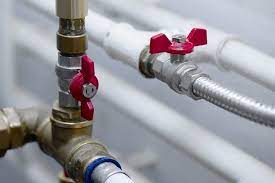In the grand symphony of your home’s plumbing system, there’s a small yet significant instrument that often goes unnoticed—the toilet shut-off valve. This unassuming valve plays a crucial role in controlling water flow to your toilet, preventing potential disasters and giving you the power to maintain your bathroom’s plumbing with confidence. In this blog, we’ll dive into the world of toilet shut-off valves, exploring their purpose, operation, maintenance, and the peace of mind they bring to your bathroom.
Understanding the Purpose of Toilet Shut-Off Valves: Imagine a scenario: a sudden toilet overflow threatens to flood your bathroom. The first line of defense against such an incident is the toilet shut-off valve. This valve, typically located near the base of the toilet where the water supply line connects, allows you to completely halt the flow of water to the toilet in case of emergencies or maintenance needs.
Operation and Usage: Operating a toilet shut-off valve is a simple yet powerful task. By turning the valve clockwise, you can effectively stop the water supply to the toilet. This is particularly handy when you need to repair a leaky toilet, replace parts, or perform any maintenance that requires the water to be turned off. It’s crucial to familiarize yourself with the location of this valve, as quick access can save you from potential water damage.
Maintenance Tips for Longevity: While the toilet shut-off valve might not be a complex piece of machinery, it does require occasional attention to ensure it functions properly when needed most. Here are some maintenance tips:
- Regular Operation: Turn the valve on and off a few times every few months. This prevents the valve from becoming stiff or corroded due to lack of use.
- Visual Inspection: Periodically inspect the valve for signs of leakage, corrosion, or wear. If you notice any issues, consider replacing the valve to prevent future problems.
- Lubrication: Apply a small amount of plumber’s grease to the valve’s stem to keep it moving smoothly.
- Emergency Preparedness: Teach all household members how to locate and operate the shut-off valve. This knowledge can be invaluable during a plumbing emergency.
Replacing a Faulty Valve: If you encounter a toilet shut-off valve that’s leaky, corroded, or difficult to operate, it’s advisable to replace it promptly. DIY replacements are possible, but if you’re unsure, consulting a professional plumber can ensure a smooth transition.


Leave a Reply